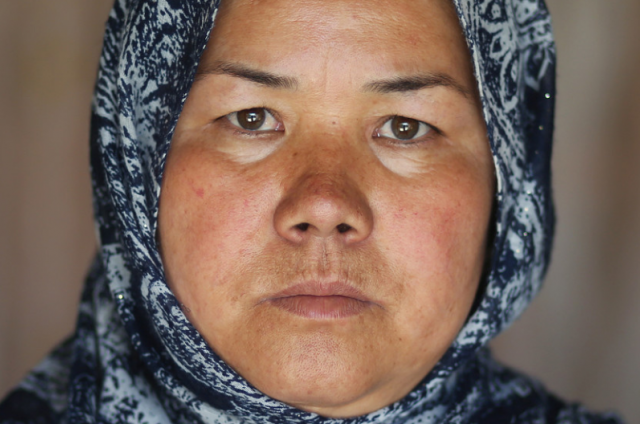16 Facts for 16 Days of Activism against Gender-based Violence
16 Facts for 16 Days
16 Days of Activism against Gender-Based Violence is a global campaign, launching every year on the 25th November, the International Day for the Elimination of Violence against Women, and culminating on the 10th December, World Human Rights Day.
Violence Against Women (VAW) is one category of Gender-Based Violence, which takes many forms. Whether sexual, physical, emotional, economic or otherwise, it is a fundamental barrier to women’s power and rights.
All women are vulnerable to violence – with one in three experiencing some form in their lifetime (source: WHO). But those in conflict-affected regions are much more exposed to it. Living in conflict zones, experiencing war and suffering displacement all increase the risk.
The women we serve are all survivors of war or conflict – but far too many have survived VAW as well. Despite the trauma, they continue to push for change. They rebuild their lives while working towards a brighter future for their children, and many become activists to drive wider, long-lasting change for their communities.
When we have the knowledge, skills and resources, each of us can make a difference. The women in our programmes prove this every day.
Raise your voice and use your platform to help end violence against women – starting with the 16 facts for 16 Days of Activism against Gender-Based Violence below.
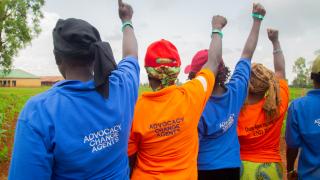
1. In England and Wales, the highest ever number of rapes was recorded by police in the year ending March 2022: 70,330.
In that same period, charges were brought in just 2,223 rape cases.
The year before in 2021, only 1 in 100 rapes recorded by police in England and Wales resulted in a charge that same year – let alone a conviction.
Source: Rape Crisis.
2. The COVID-19 pandemic increased risk factors for violence against women.
Between April and June 2020, there was a 65% increase in calls to the National Domestic Abuse Helpline in England and Wales, when compared to the first three months of that year.
Source: ONS.
3. In the United States, two out of every ten young women aged 18–29, have been sexually harassed online.
Source: UN Women.
4. In conflict zones, for every one rape that is reported, between 10-20 are not.
Source: Relief Web.

5. In some areas of South Sudan, up to 70% of women have experienced sexual and/or physical intimate partner violence.
Source: Global Women's Institute.
We spoke to community members where we work in South Sudan about their attitudes towards violence against women. Read about their experiences and viewpoints in our policy brief.
6. Most violence against women is perpetrated by current or former husbands or intimate partners.
Globally, 81,000 women and girls were killed in 2020. 58% died at the hands of an intimate partner or a family member. That's equivalent to a woman or girl being killed every 11 minutes in their home.
Source: UN Women.
We have recently released policy briefs on community attitudes towards violence against women, based on conversations with women and men in the communities where we work. Here are just some of our findings:
- In Afghanistan, 51% of women have faced physical and/or sexual violence at the hands of their partner or husband in their lifetime, with 46% of women reporting such violence within the past 12 months.
- In the Democratic Republic of Congo (DRC), VAW is often a part of social norms. 51% of women face physical and/or sexual violence in the hands of their partner or husband, with 37% of women reporting such violence within the past 12 months.
- 21.4% of Nigerian women face physical and/or sexual violence in the hands of their partner or husband, and 1 in every 5 women endure female genital mutilation, notably in southern Nigeria.
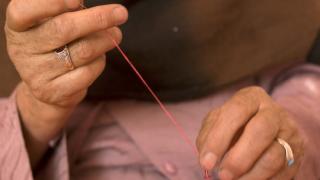
7. Globally, violence against women disproportionately affects low- and lower-middle-income countries and regions.
And data shows that this risk is even higher in conflict-affected regions.
Source: UN Women.
8. School-related gender-based violence is a major obstacle to universal schooling and the right to education for girls.
Source: UN Women.
9. In the Middle East and North Africa, 40–60% of women have experienced street-based sexual harassment.
Source: UN Women.
10. Women and girls make up more than 60% of all victims of human trafficking.
Three out of four are trafficked for sexual exploitation.
Source: UN Women.
11. There are still countries where female genital mutilation is almost universal; where at least 9 in 10 girls and women, aged 15-49 years, have been cut.
There are at least 200 million women and girls, aged 15–49 years, who have undergone female genital mutilation in 31 countries where the practice is concentrated.
Source: UN Women.
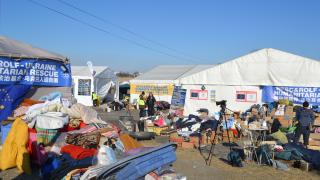
12. 1 in 5 internally displaced or refugee women living in humanitarian crisis or armed conflict have experienced sexual violence.
Source: UN OCHA.
Since Russia invaded Ukraine in February 2022, women internally displaced within Ukraine and fleeing as refugees have faced an extremely high risk of rape and sexual violence. Olena Behnke, our Grants and Administration Officer at Women for Women International - Germany, wrote a blog about the threat women faced 100 days into the war.
You can read Olena's blog here. Please note that this blog contains graphic mentions of rape and sexual violence that some people may find triggering.
13. In Iraq, 1.32 million people are estimated to be at risk of different forms of gender-based violence. 75% of them are women and girls.
Source: UN Iraq.
14. Less than 40% of women who experience violence seek help of any kind.
Source: UN Women.
15. Gender-based violence keeps women from fully engaging in political and economic systems.
This will have a knock-on effect on a nation's progress towards becoming equal and peaceful. Listening to women's experiences of war and including women actively and equitably in peace negotiations is essential to building long-term peace. History has shown us that when women properly participate in processes, results are more durable and better implemented.
Source: HHR Journal and CRF.
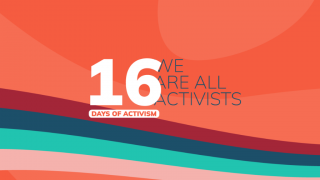
16. Stigma stops women from speaking about their experiences of violence.
Fear and shame stop people from reporting or discussing their experiences of violence, but we must break the silence in order to end it. Each and every one of us has the power to raise our voices against dangerous norms and behaviours.
Start your activism journey to help end gender-based violence today. Download our free Calendar of Action, filled with ways you can make a difference.

